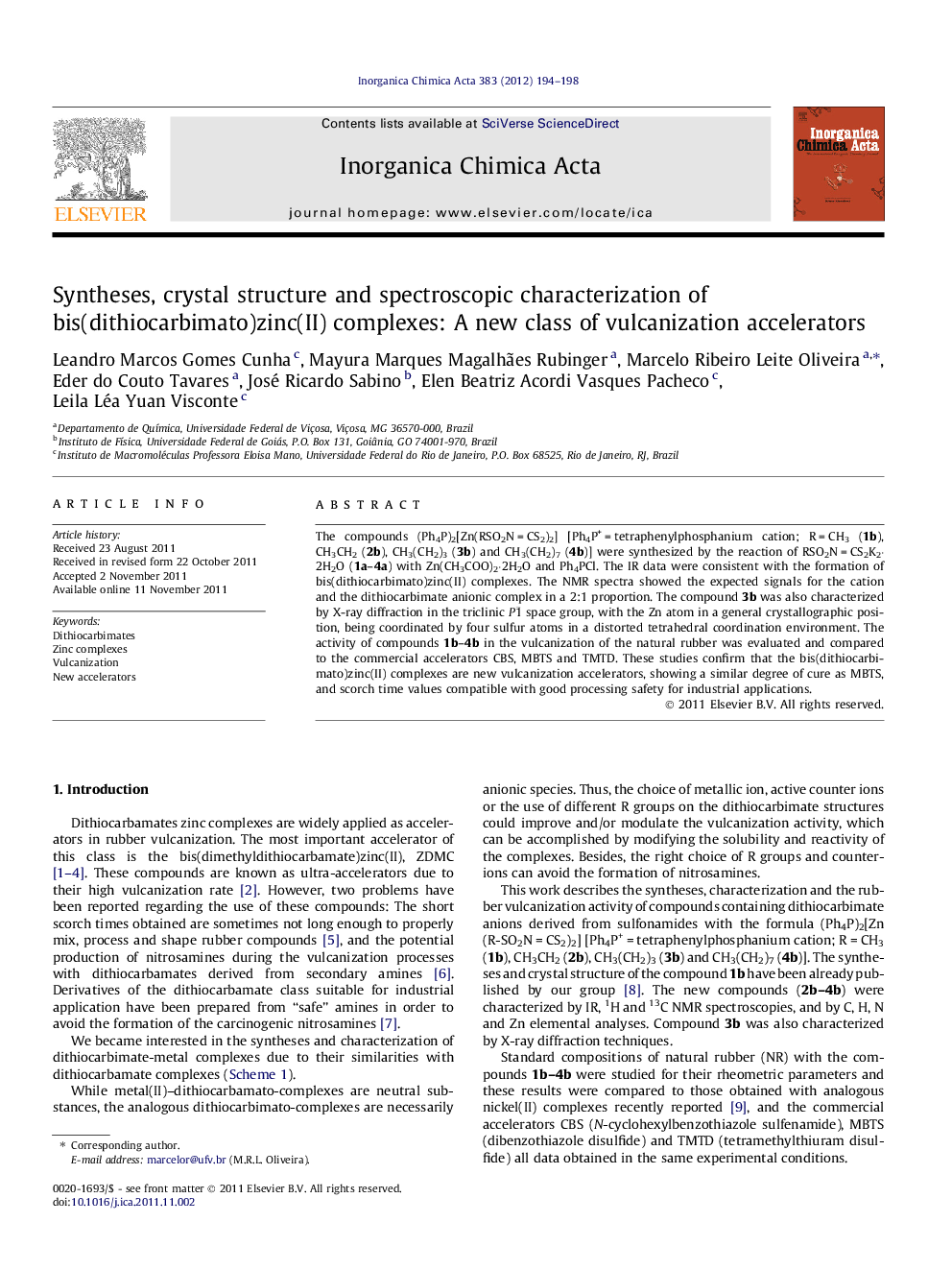| کد مقاله | کد نشریه | سال انتشار | مقاله انگلیسی | نسخه تمام متن |
|---|---|---|---|---|
| 1312493 | 1499204 | 2012 | 5 صفحه PDF | دانلود رایگان |

The compounds (Ph4P)2[Zn(RSO2N = CS2)2] [Ph4P+ = tetraphenylphosphanium cation; R = CH3 (1b), CH3CH2 (2b), CH3(CH2)3 (3b) and CH3(CH2)7 (4b)] were synthesized by the reaction of RSO2N = CS2K2·2H2O (1a–4a) with Zn(CH3COO)2·2H2O and Ph4PCl. The IR data were consistent with the formation of bis(dithiocarbimato)zinc(II) complexes. The NMR spectra showed the expected signals for the cation and the dithiocarbimate anionic complex in a 2:1 proportion. The compound 3b was also characterized by X-ray diffraction in the triclinic P1¯ space group, with the Zn atom in a general crystallographic position, being coordinated by four sulfur atoms in a distorted tetrahedral coordination environment. The activity of compounds 1b–4b in the vulcanization of the natural rubber was evaluated and compared to the commercial accelerators CBS, MBTS and TMTD. These studies confirm that the bis(dithiocarbimato)zinc(II) complexes are new vulcanization accelerators, showing a similar degree of cure as MBTS, and scorch time values compatible with good processing safety for industrial applications.
Four tetraphenylphosphanium bis(N-R-sulfonyldithiocarbimato)zincate(II) salts were prepared. Their structures were confirmed by crystallographic and spectroscopic studies. The complexes behaved as accelerators for the vulcanization process, being faster than the analogous nickel complexes. When added to standard natural rubber formulations, these compounds lead to similar degrees of crosslinking, with higher scorch safety than the compositions with commercial accelerators. Thus, these complexes set up a new class of vulcanization accelerators.Figure optionsDownload as PowerPoint slideHighlights
► Four new (N-R-sulfonyldithiocarbimato)–Zn(II)-complexes were obtained.
► The structure of (Ph4P)2[Zn{CH3(CH2)4SO2N = CS2}2] was determined by X-ray diffraction.
► The complexes behaved as accelerators for the rubber vulcanization process.
Journal: Inorganica Chimica Acta - Volume 383, 30 March 2012, Pages 194–198